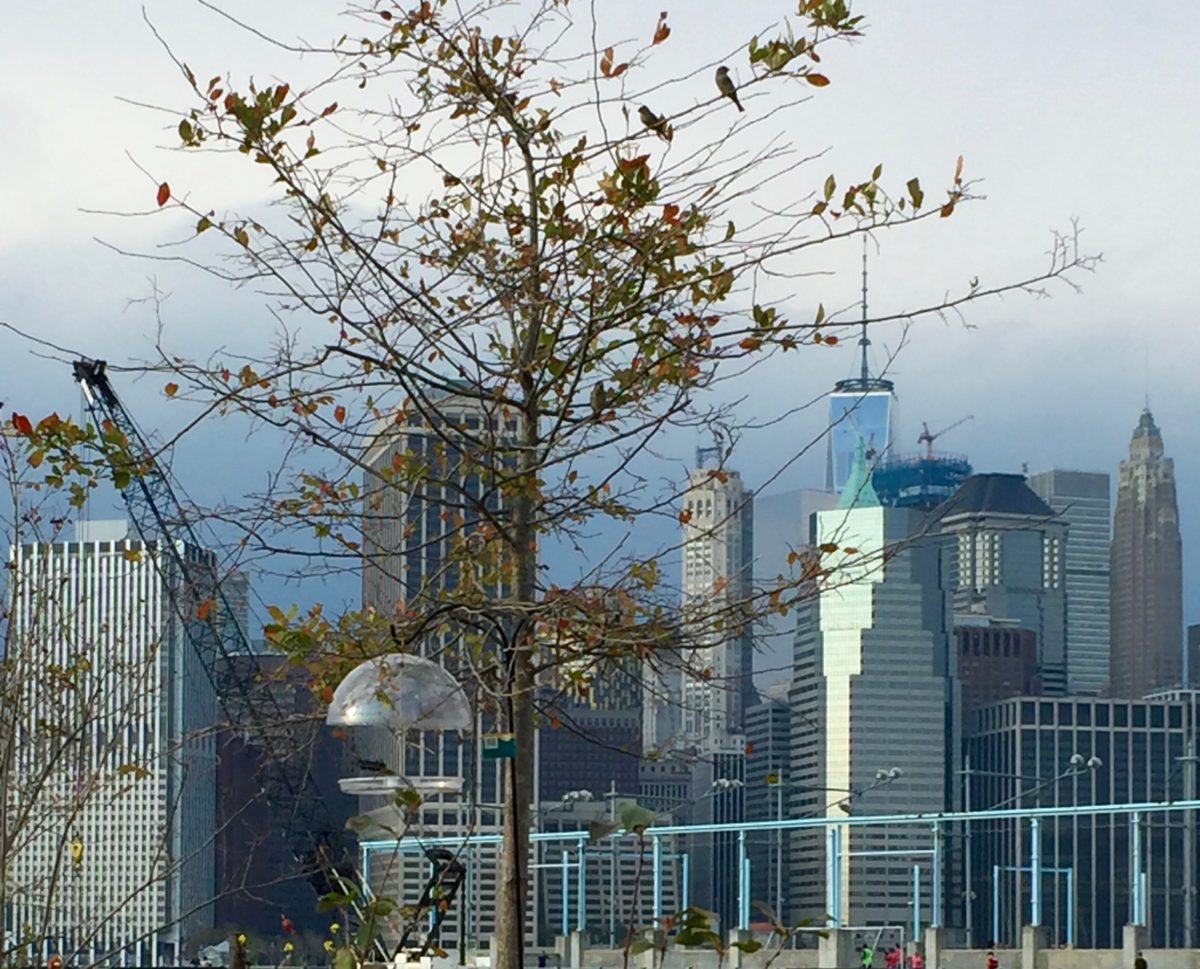If you haven’t visited Swale, the floating food forest docked at Brooklyn Bridge Park, there’s just over a week left before it closes for the winter. In particular, the 5,000-square-foot barge is host to an installation exploring a fun question: What do birds think of our musical tastes?
The installation is called PandoraBird: Identifying the Types of Music That May Be Favored by Our Avian Co-Inhabitants, and it runs on Mondays from 10 a.m. to 1 p.m. PandoraBird consists of a bird feeder with a computer and audio system built in. It plays a selection of instrumental songs, and when a bird comes to feed, the computer system make note of which type of bird it is and how long it stays. That information will go into an algorithm that selects which music the system plays based upon the birds’ activity.
If we're going to be bombarding these populations with human noise on a constant basis, we might as well figure out what they prefer.
Though Swale is closed on Mondays, the installation is visible from the benches in Pier 6, so you can listen to the songs and observe the birds there. Tomorrow, there’s also a chance to learn about the installation while Swale itself is open. Its creator, Dumbo-based artist Elizabeth Demaray, will be giving a talk there at noon.
Demaray seeks to explore, in her words, “the interface between the built and the natural environment.” Demaray worked with Ahmed Elgammal, a computer science professor at Rutgers (where Demaray also teaches) to develop the computer vision system for the installation. She’s currently looking for an ornithologist to collaborate with as well, she told Technical.ly.

PandoraBird in action. (Courtesy photo)
The idea behind PandoraBird, Demaray said, is to consider what impact our day-to-day activity has on other species. Namely, birds depend upon hearing each other’s calls, and the noise we humans generate can interfere with their ability to do so. Even when our noise isn’t threatening, Demaray speculated, it still may be irritating to them. PandoraBird, she said, is a step toward becoming mindful of the many other species we share the environment with: how can we go about our business more considerately?
“No doubt birds would prefer silence over human noise,” she said. “But we kind of figured that if we’re going to be bombarding these populations with human noise on a constant basis, we might as well figure out what they prefer.”
PandoraBird is an offshoot of a previous project that attempted to examine the same question. That project was set up quite differently. It was situated in the sculpture park at Abington Art Center in Jenkintown, Pa., outside of Philadelphia. There, Demaray, in collaboration with artist James Walsh, set up five listening stations playing different genres of music, such as classical, jazz and rock. Volunteers stood watch at each station to count how many birds went to each station. But the results ended up not being so reliable — and they didn’t come close to settling the question of what music the birds preferred. Elgammal, her colleague at Rutgers, suggested that using computer vision to track the birds’ activity could yield clearer results.
“No one had studied what kind of music a bird would like, so there were no criteria for us to go on,” she said. “I was personally dying to know.”
Since adding in the computer element, Demaray said, the most challenging part of the equation has become what songs to choose to pique birds’ interest. Right now, the system includes just five songs. They’re all instrumental, in order to eliminate the factor (at least for now) of whether birds prefer vocal or non-vocal songs. As the project collects more data, the eventual goal is that the music will adapt to the birds’ music preferences.
So far, it seems that birds have taken a liking to PandoraBird. Since the project was first installed last month, the site has become a busy birding spot, Swale’s founder Mary Mattingly told Technical.ly. In fact, she said, she’s been contacted by a local birdwatching group, which is now tracking the activity of birds on Swale.
“They found that there were a lot of birds coming around, and it had to do with Elizabeth’s piece,” she said.
Before you go...
Please consider supporting Technical.ly to keep our independent journalism strong. Unlike most business-focused media outlets, we don’t have a paywall. Instead, we count on your personal and organizational support.
Join our growing Slack community
Join 5,000 tech professionals and entrepreneurs in our community Slack today!
